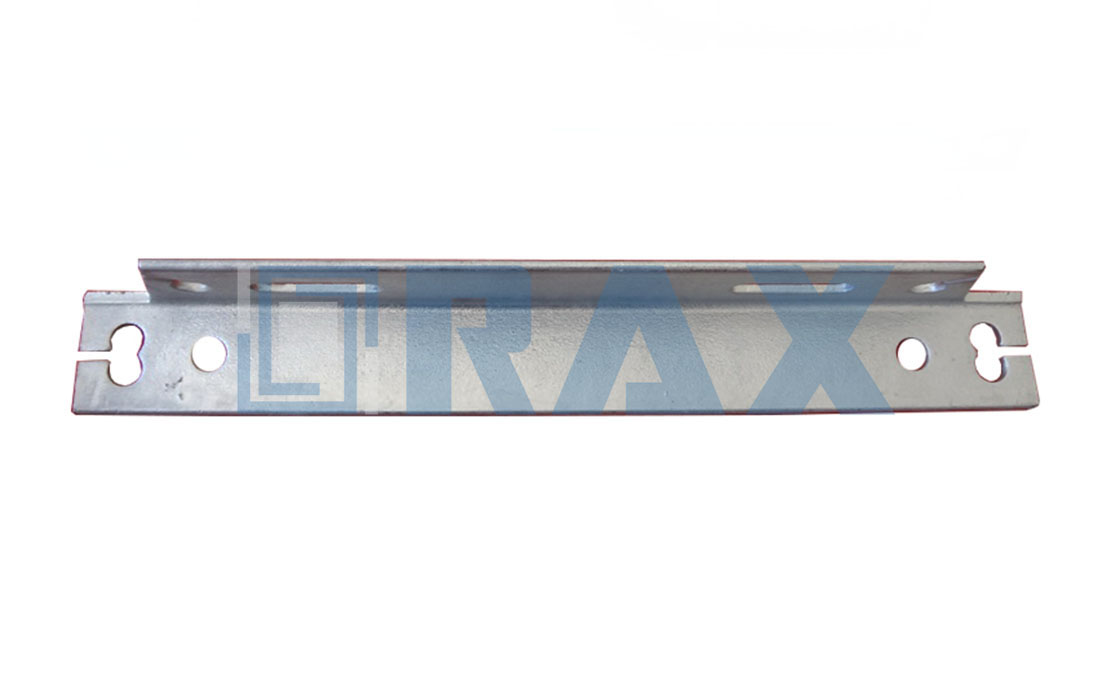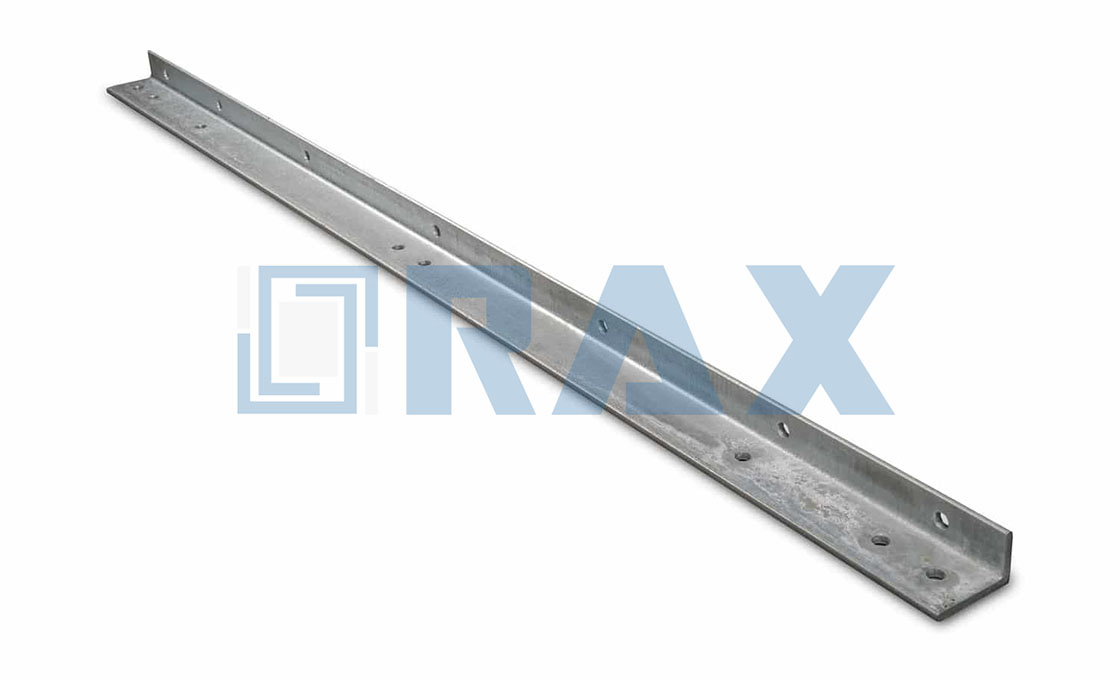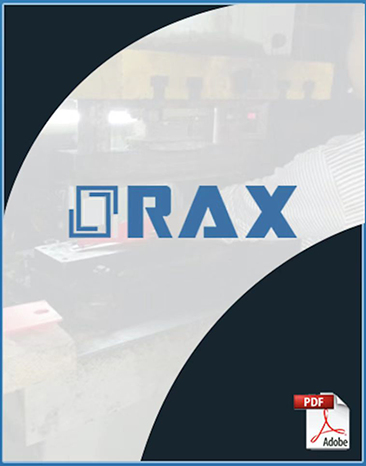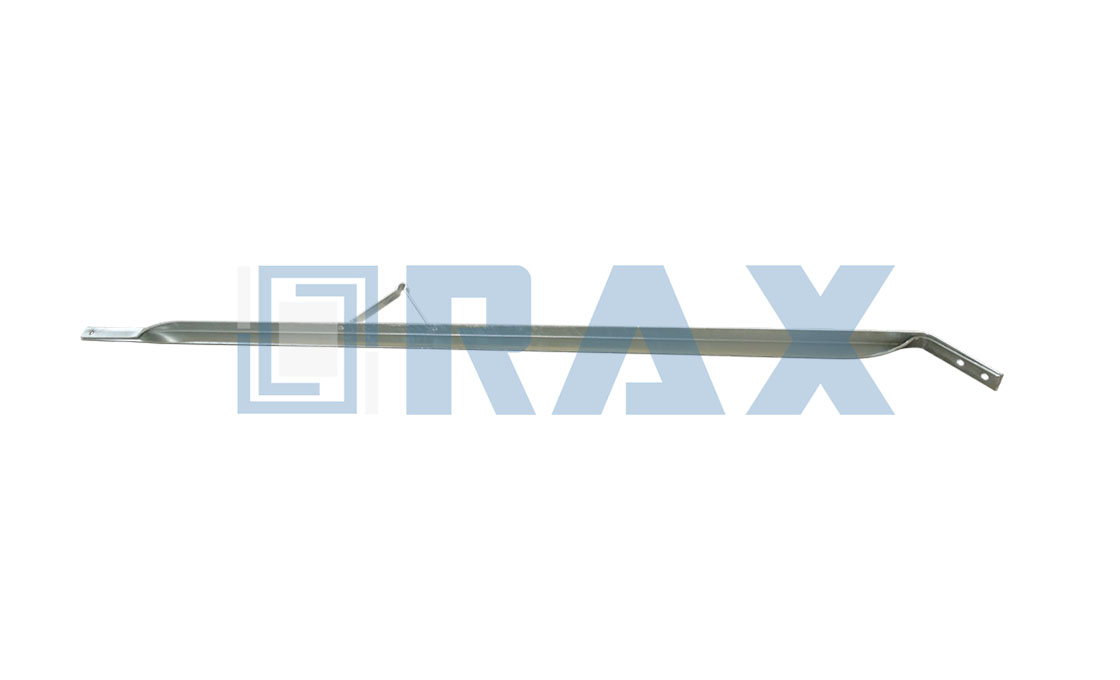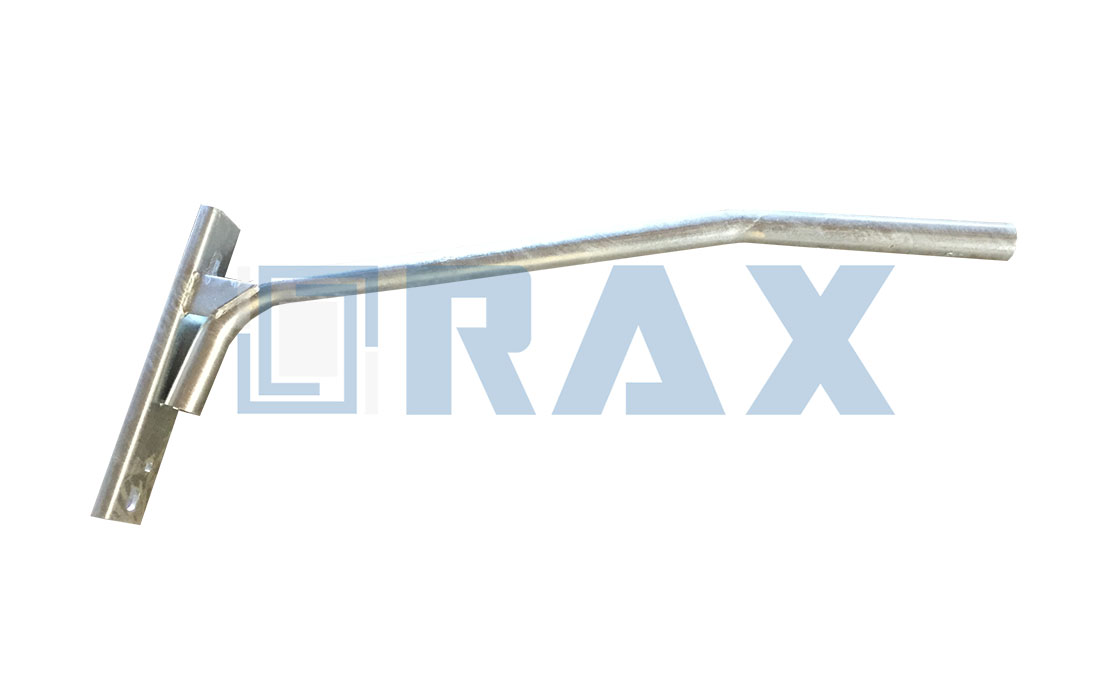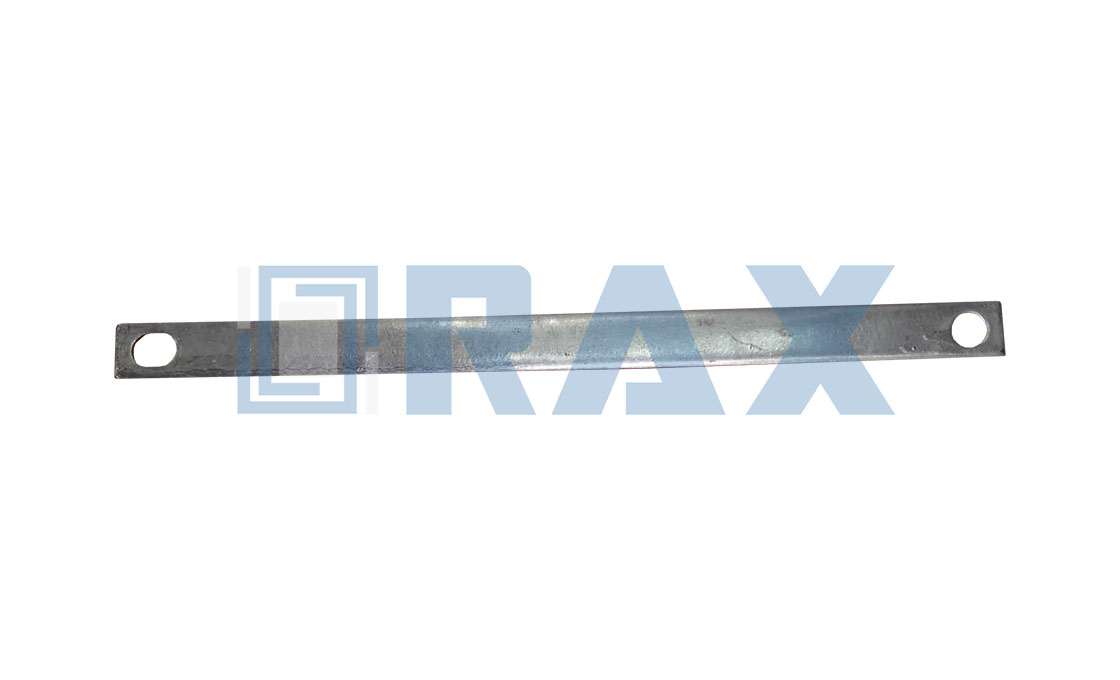Electrical Cross Arm
According to the application, the electrical cross arm is also named power pole cross arms, utility pole cross arms, telephone pole cross arms, light pole cross arms or crossarms for short. In different application setups, there are different configurations for the electrical cross arm. For instance, power pole cross arms are connected with the pin insulator by an insulator pin, and the insulator connects with the wire to realize the power delivery. Light pole cross arms are used on the light pole to support the streetlight power.
The electrical cross arm is connected to the utility pole by double arming bolt, pigtail bolt, or U bolt. There are cross arm braces to support the cross arm so that the line will not drop off.
The main process for making the electrical cross arm is pressing. All holes are pressed in one operation with no burrs on it. There are any holes on the crossarm, the holes are used to connect other pole line hardware.
All matching holes for bolts are compatible with each other so a gauge 2 mm less in diameter than the diameter of the bolt will pass freely through the assembled pole line hardware fitting in a direction at a right angle to such members.
To keep the crossarm hole size accurate, Rax Industry team uses an automatic machine. The automatic machine also shortens production time and saves labor costs. This way, Rax Industry gets perfect feedback from the customers.
Rax Industry team is very strict with the raw material selection, for the electrical cross arm, Rax Industry does not use recycled material. As a responsible cross arm manufacturer and supplier, Rax Industry team will try their best to make your business take off.
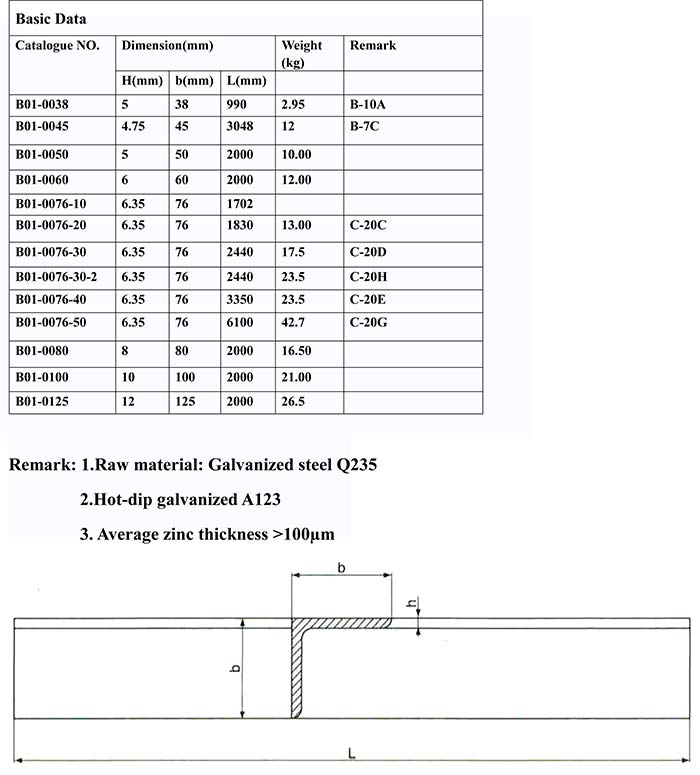
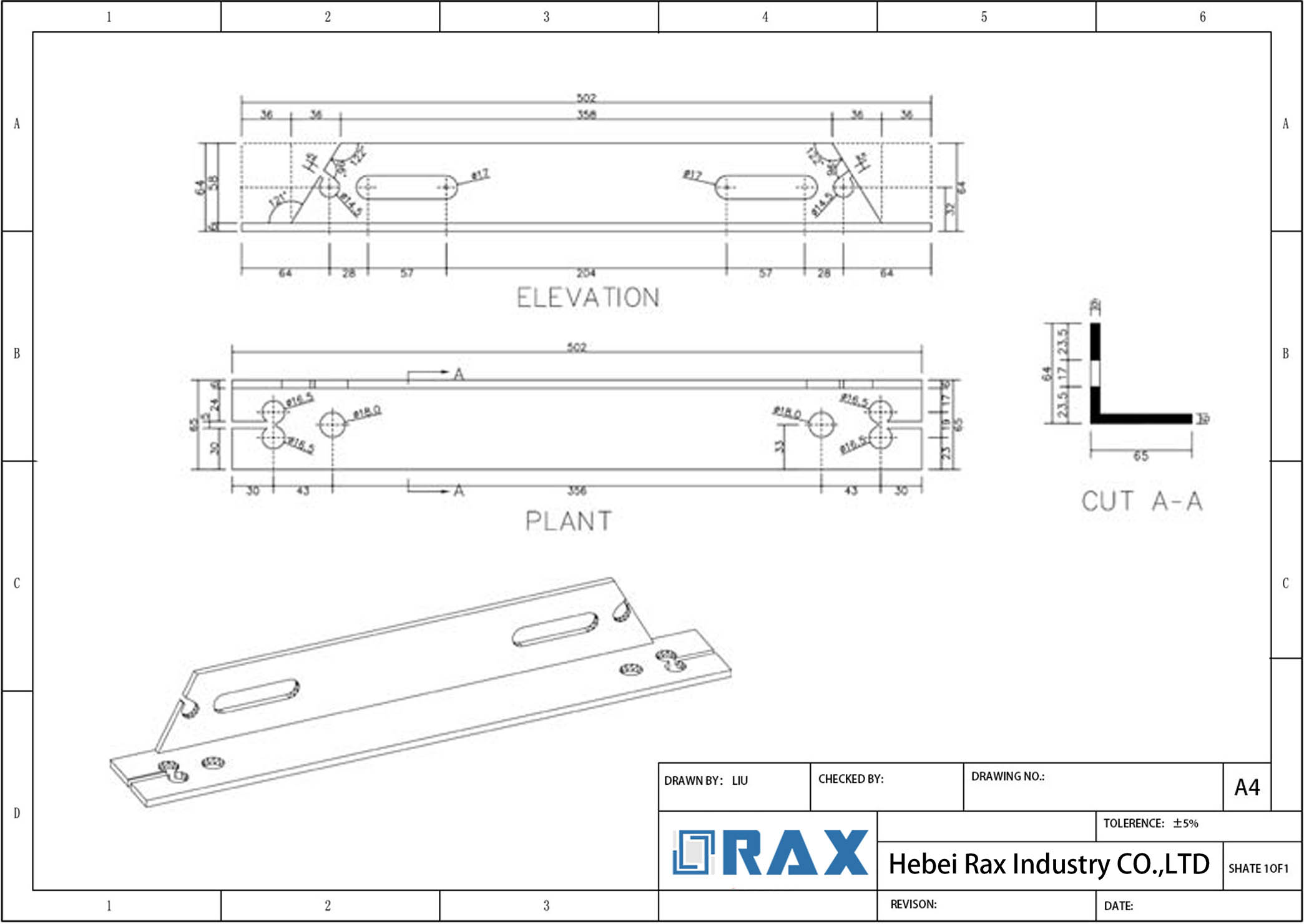
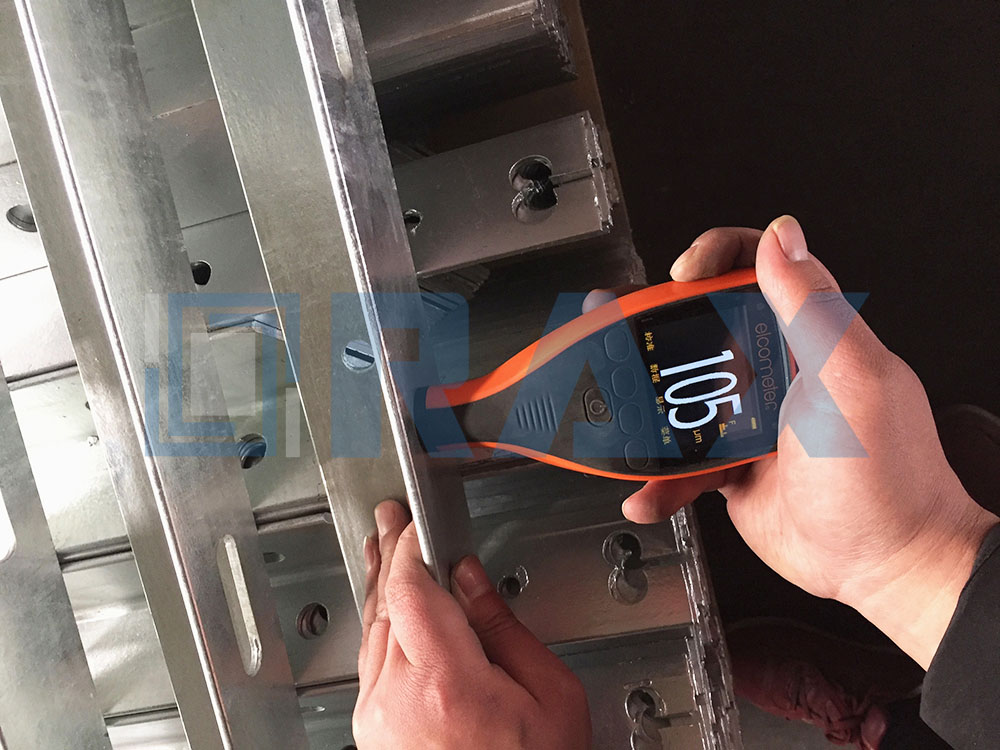
Galvanized Thickness Test of Cross Arm
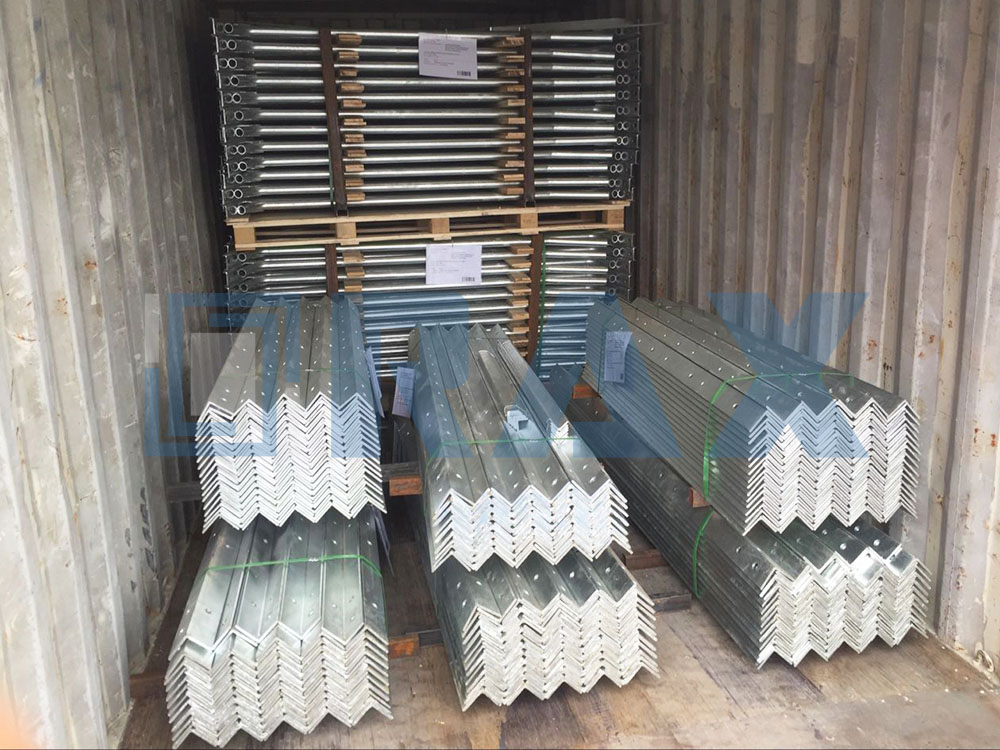
Electrical Cross Arm Packing
Electrical Cross Arm: The Complete Guide
Most definitely, I know you need an electrical cross arm for your transmission and distribution lines.
A reason why in this guide, I will show you how to choose a suitable electrical cross arm.
Whenever you are buying this accessory, it is important to consider technical specifications, design, understand the installation process, among other aspects.
The good news, you will learn about all those here.
Let’s dive right in.
- Chapter 1: What is an Electrical Cross Arm?
- Chapter 2: Why it is Needed in Transmission and Distribution Lines
- Chapter 3: Classification of Electrical Cross Arm
- Chapter 4: Pole Line Hardware to Use with Electrical Cross Arm
- Chapter 5: Electrical Cross Arm Manufacturing Process
- Chapter 6: How to Specify Electrical Cross Arm
- Chapter 7: Electrical Cross Arm Installation Process
- Chapter 8: Frequently Asked Questions (FAQs)
- Chapter 9: Conclusion
What is an Electrical Cross Arm?
It is an engineered piece of composite equipment used in pole line technology to hold power lines and other electric equipment.
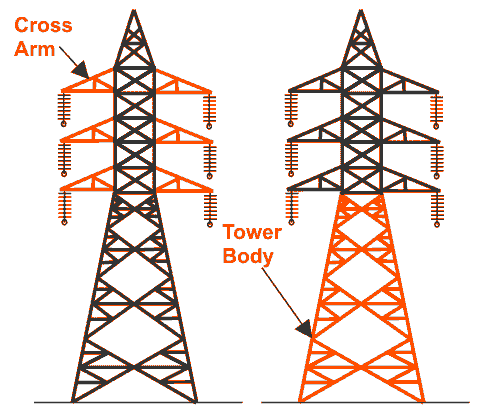
Cross arm in power transmission
For an electrical cross arm to be reliable, it has to be efficient in both dead-end and tangent applications.
To fulfill the needs of distribution and transmission, you need to choose a strong cross arm engineered for maximum performance.
Electrical cross arms are also known as telephone pole cross arms, light pole cross arms or power pole cross arms.
For example, power pole cross arms are usually connected to an insulator using an insulator pin.
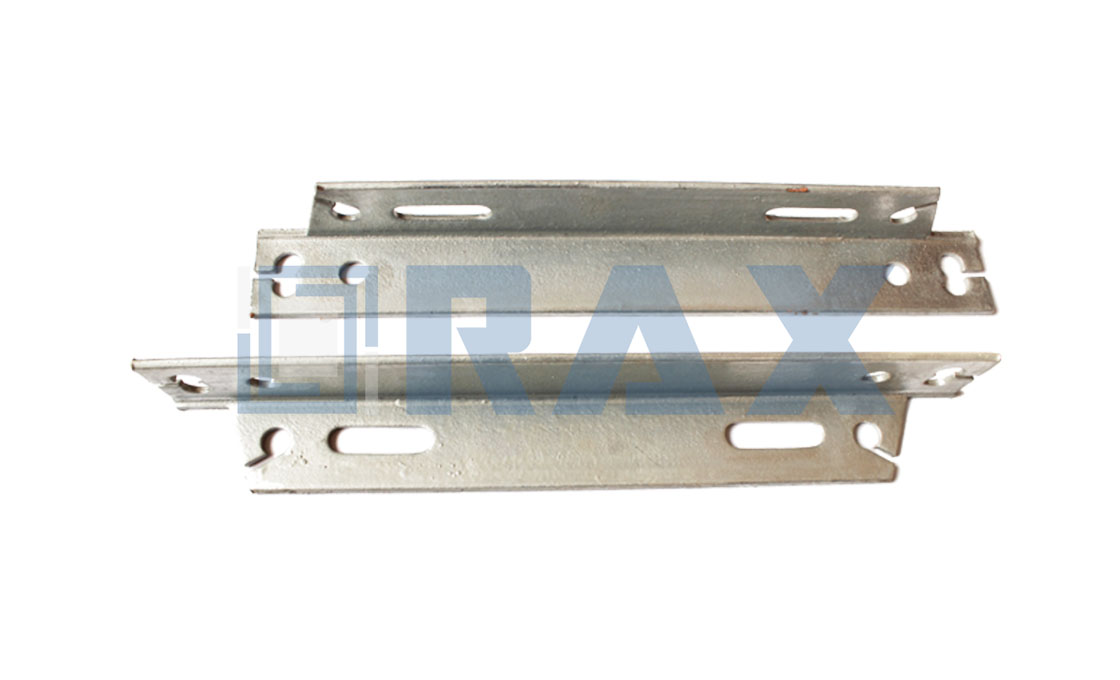 Single electrical cross arm
Single electrical cross arm
The insulation is then attached to the wires on the power line so that power connection is complete.
Why You Need Electrical Cross Arm in Transmission and Distribution Lines
Electrical cross arms perform different things depending on the mode of application.
It is an integral piece of infrastructure on railroads, telephone companies, electrical utility companies, cable companies,and refineries.
Such applications require electrical cross arms that can improve the resilience and efficiency of the system in different weather conditions.
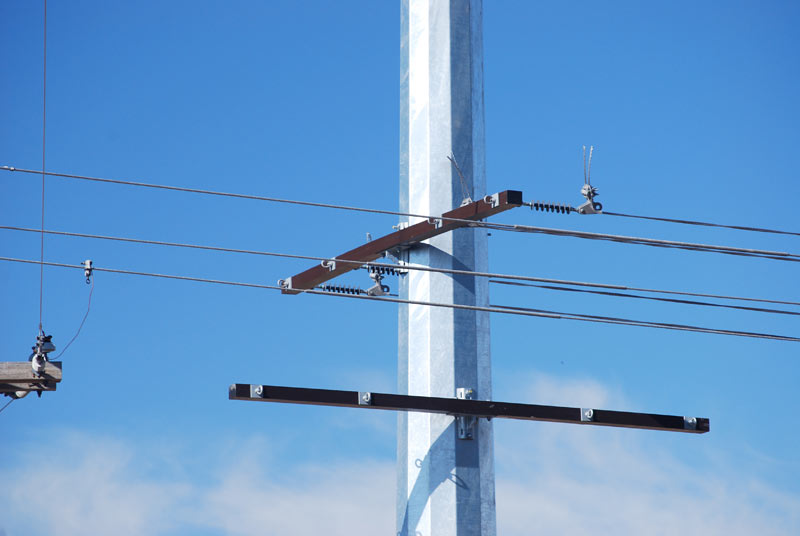
Steel cross arms
In light poles, the electrical cross arm is used to provide support to street light power lines.
Along with distribution and transmission lines, the electrical cross arm used to support and anchor conductors.
It holds the cable and the insulator to the main body usually the tower.
It is important as it keeps the conductor at a certain height above the ground.
In the transmission of electricity, the cross arms are spaced evenly to provide enough space between the lines.
The spacing is to prevent the power lines from coming into contact with one another.
Classification of Electrical Cross Arm
When it comes to buying electrical cross arms, you can choose from a range of designs available in the market.
In most cases, the classification criteria will depend on the nature of the application at hand.
Look at these:
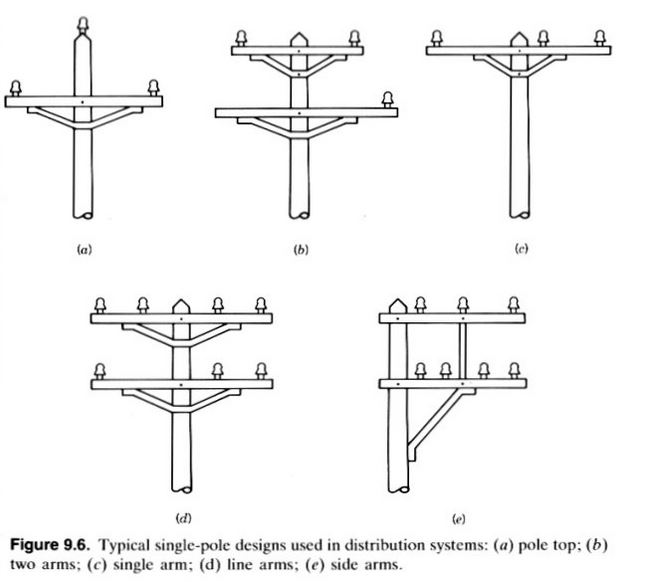
Different types of the electrical cross arm – Photo courtesy: Steel Power Pole
1) Power pole cross arms
These are particular types of cross arms used on power poles to connect conductors and insulators.
They are required on the power poles to ensure that the electricity is transmitted well.
It also has holes in it that will be used to tighten the insulators and the conductors using bolts.
2) Line-cross arms
Line arms are part of the cross arm found on both sides of the pole used for both short and long transmissions.
It is usually a cross arm that has been separated by the pole in two distributing the weight equally.
The connection is generally in a straight line with extra support at the base of the cross arm.
3) Side arms
This type of electrical cross arm is also known as braced horizontal arms.
It is a single arm of the same size fastened to the pole line with a little support under it.
You can see the cross-arms on different levels of the pole for transmission on single circuits.
4) Telephone pole cross arms
Telephone cross arms are known to be one of the most extended cross arms because it allows multiple connections.
It allows for more than two links on each side of the cross arm.
It is common to find more than one telephone pole cross arm on one pole depending on the connection.
5) Light pole cross arms
This type of cross arm is used to provide support to lights such as street lights and also in traffic lights.
They vary regarding length depending on the number of bulbs it is expected to hold.
Most of them are made of steel and hang at different levels of the pole.
Pole Line Hardware to Use with Electrical Cross Arm
Anytime you will be using an electrical cross arm you may need the following accessories too:
a) Pigtail bolts
It is also known as pigtail hook, pigtail eye bolt, pigtail screw, pigtail hook screws or pigtail fastener.
It used on poles to hang suspension clamps, dead-end clamps and also electrical cross arms among other pole line hardware.
It has a helical end on one side and threads on the other thus the name pigtail bolt.
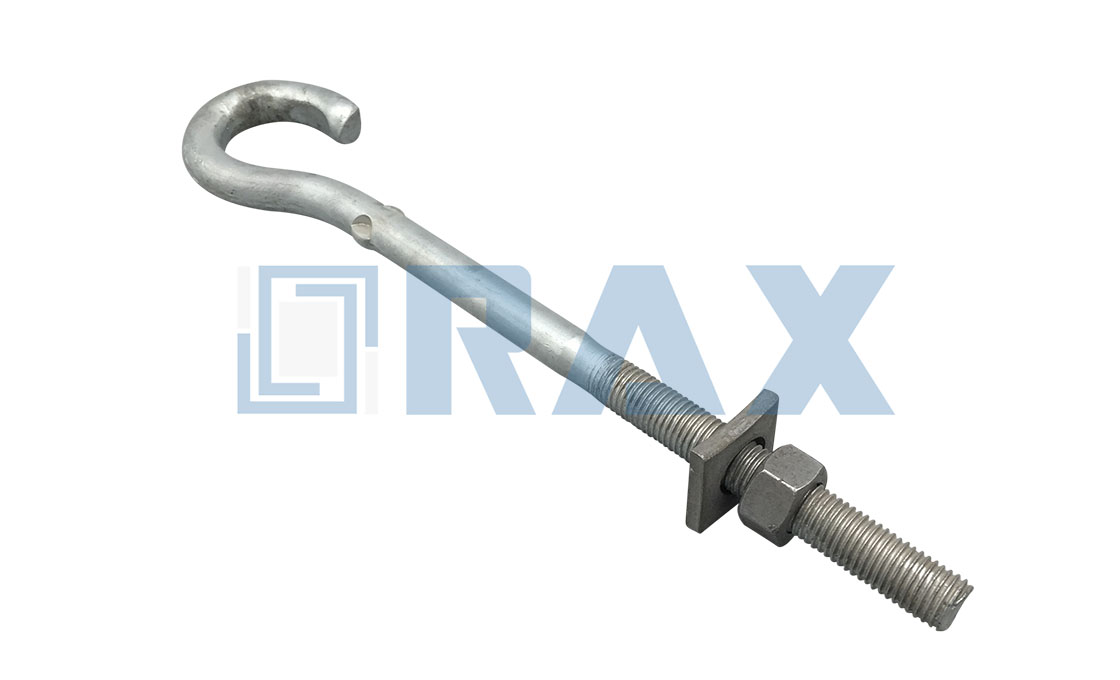 Pigtail bolt
Pigtail bolt
b) U bolt
It is a bolt that is shaped in the form of the letter U and has threads on each end.
They are fasteners used in holding various components to the electrical cross arm.
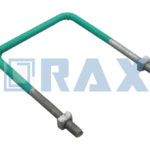 U bolt
U bolt
They are described better depending on the kind of work it will perform.
c) Double arming bolts
These are bolts that have threads made all over them.
They do not have heads or tails as both ends are the same, but the sizes vary.
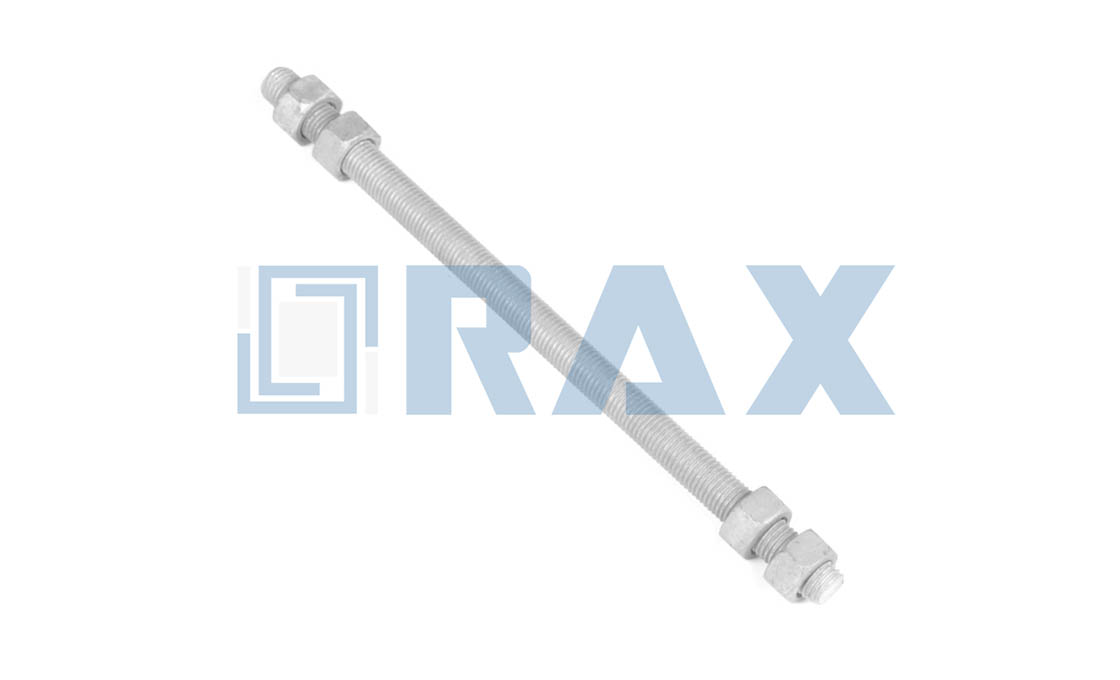 Double arming bolt
Double arming bolt
They have nuts used to fasten the other connections on the electrical cross arms from both ends.
Electrical Cross Arm Manufacturing Process
The process of manufacturing electrical cross arms depends on the kind of material used.
Steel cross arms require straightforward technology as explained below.
Remember to follow all the safety guidelines.
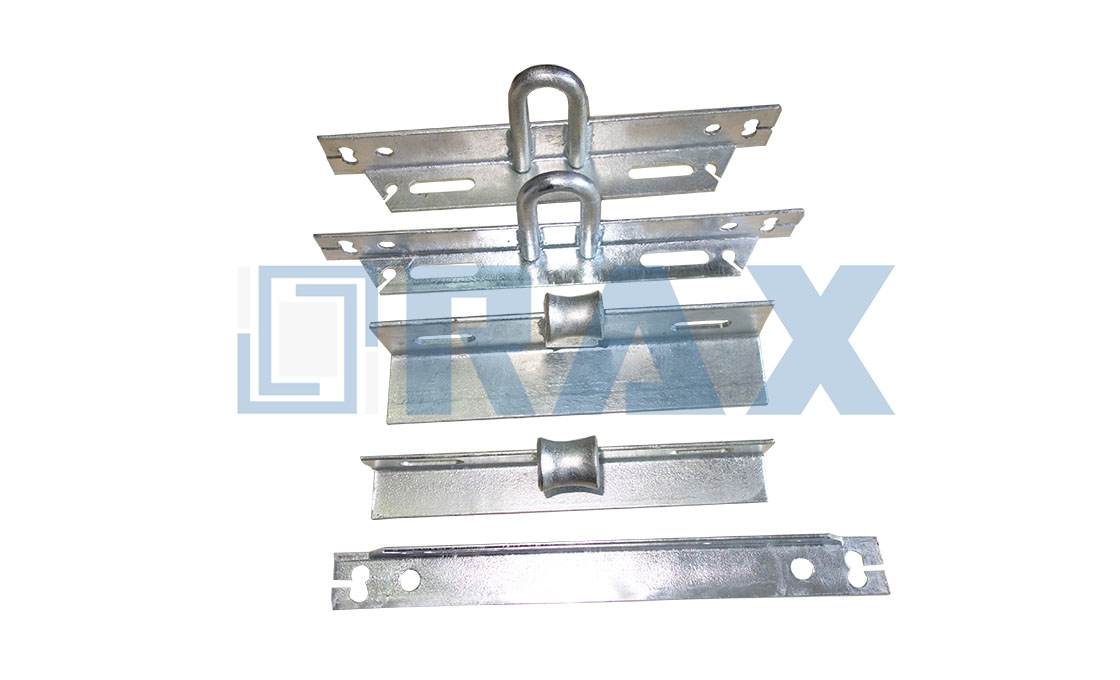 Electrical cross arms
Electrical cross arms
Gather all the materials required for the process and cut them according to the measurements specified.
Drill holes on the steel bars according to the specifications of the customer.
After that, dip the steel in hot molten zinc so that it can acquire corrosion resistance properties.
At this point, the cross arm is ready for sale.
How to Specify Electrical Cross Arm
Now, this is yet another critical aspect that you need to know when buying electrical cross arms.
1. Type of Material
The type of material used in making electrical cross arms vary depending on the manufacturing company.
Most companies prefer to use timber in making the cross arms as it is durable and can withstand the harsh weather conditions.
Apart from that, other companies use materials such as hot dip galvanized steel and composites can also be used.
Since electrical cross arms hold a lot of loads, the material has to be robust, durable, and resilient to its function.
It is also used outdoors where harsh weather conditions and other accidents may occur.
This is the reason why the material used has to be very strong and durable.
2. Shape and design
The most common form of the electrical cross arm is the straight bar design which is visible on many poles.
It is a straightforward design to make and install making it the most preferred type of electrical crossbar.
It does not require extra support for one it has been fastened to the poles and making other installations are easy.
The other shape seen on electrical power lines is the V-shaped cross arm.
It is not a common type because it requires extra support on the poles as compared to vertical cross-arms.
This does not give enough room for the connection of multiple conductors and insulators
3. Holes
The holes on the electrical cross arm are available according to the size of the component it will be attached.
Fittings on the cross arms have to be tight and held in place, so the holes have to be of the right size.
The number of holes drilled on the cross arm should correspond to the number of utilities that will connect to it.
4. Bolts and nuts
Mainly used to hold the utilities to the cross arm and also to hold the cross arm to the pole.
Different types of locks are used on electrical cross arms depending on the connection.
The types of bolts used include Pigtail bolts, U bolt, and double arming bolts.
5. Finishing – Hot dip galvanized
Hot dip galvanization is the final process done to the steel electrical cross arms to give it extra properties.
The additional features include making it resistant to corrosion that will affect the performance of the cross arm.
It involves dipping the steel cross arm in liquid zinc to provide it with an extra coating to prevent it from rusting.
6. Dimension
The dimensions of the electrical cross arms vary when making an order from the manufacturer.
Normally, the customer has to specify the following dimensions so that the manufacturer can know what to supply.
The size of the arm requires a measure of top face width, side face depth, and overall length.
Pinhole specifications include the number and diameter of holes, center and side spacing, and end distance.
Dimensions on the width, orientation, and spacing of the brace bolt are important.
Remember to include the diameter of the through bolt hole and the number of holes required for the pole through bolt.
For the double arming bolt, specify if holes are needed, the end distance, and the diameter of the bolt hole.
7. Weight
The weight of the electrical cross arm depends on the type of material used in making it.
Normally, the materials used vary in weight, therefore, affecting the overall weight of the cross arm.
In case wood is used, there are different types of wood which will also make the weight vary.
8. Tensile strength
Electrical cross arms work in very risky connections that are expected to remain still for a very long time.
The tensile strength of the cross arm has to be very high to withstand the kind of weather conditions.
Apart from that, the connections usually increase the weight on the cross arm, so it has to be very strong.
Look at the material used in making the cross arms and the kind of connection.
Improve the strength of the material used as much as you can to avoid any problems caused by excess weight.

Technical data of the electrical cross arm
Electrical Cross Arm Installation Process
The installation of an electrical cross arm is a complex process that requires an expert to perform.
It is a job that is quite dangerous and needs assistance from experts.
The people charged with the responsibility of installation should also be cautious and put on protective gear.
The first step in every form of installation requires you to gather all the relevant materials to the site of the facility.
Depending on the mode of installation, make sure that everything is available including the cross-arm connections and fasteners.
The first step is raising the pole after making holes in it.
The second part involves taking all relevant connections such as conductors and insulators and connecting them to the cross arm.
Fasten them to the cross arm using the specified type of bolts so that they are in place.
Make sure that they are tight enough and will not be affected by other conditions such as harsh weather.
The cross arm connects to the pole with the help of an elevator to lift you from the ground.
It is a very tricky and massive task, so you do it with help from other people who also have enough experience in installation.
Holding the cross arm in place, fasten it using a bolt and nut to keep it in the right position.
You can connect the other components of the pole line on the ground before raising it up.
You can also join the different elements once the cross arm is in the right position.
It is important to get all the measurements right before making any cuts as the material is expensive.
Frequently Asked Questions (FAQs)
What is an electrical cross arm?
Electrical cross arm is an engineered piece of composite equipment used in pole line technology to support power lines and other electric equipment.
It is also known as telephone pole cross arm, light pole cross arm or power pole cross arms.
What is the application of the electrical cross arm?
The electrical cross arm is used on the transmission lines or overhead lines.
What are the types of electrical cross arms?
In most cases, the classification criteria will depend on the nature of the application at hand.
- Power pole cross arms
- Line-cross arms
- Side arms
- Telephone pole cross arms
- Light pole cross arms
Most of them are made of steel and hang at different levels of the pole.
How to manufacture an electrical cross arm?
The process of manufacturing electrical cross arms depends on the kind of material used:
- Gather all the materials required for the process and cut them according to the measurements specified.
- Drill holes on the steel bars according to the specifications of the customer.
- After that, dip the steel in hot molten zinc so that it can acquire corrosion resistance properties.
- Now the cross arm is ready for sale.
How to specify electrical cross arms?
This is another critical thing that you need to know when choosing electrical cross arms. It can be divided into several aspects.
- Type of Material
- Shape and design
- Holes
- Bolts and nuts
- Finishing – Hot dip galvanized
- Dimension
- Weight
- Tensile strength
Conclusion
In pole line technology, manufacturers know electrical cross arms are expected to be strong enough to withstand harsh weather conditions.
It has to be safe for the people who are working on them, especially for replacements, repairs,s and also installation.
It has to be engineered specially to meet the requirements of the customer and also to perform exceptionally well.
At Rax Industry, designing and manufacturing electrical cross arms is what we do best.
Talk to us today, and our technical experts will help you to choose a suitable electrical cross arm.
